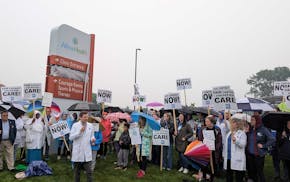Whenever I get together with a group of people these days it seems almost everyone has a story to tell about caring for aging parents and relatives (even if they have died). The love that threads these stories is life affirming. The emotional strain from the caregiving experience is also very real.
November is National Family Caregivers Month and the numbers about caregiving are striking. There were nearly 42 million family members caring for someone 50 years and older without compensation in 2020. That has risen from 34 million in 2015, calculates the National Alliance for Caregiving and AARP. The typical caregiver of an adult spends some 4.5 years in the role. (This column is focused on aging parents, relatives, and friends; but caregiving also includes those raising children with serious health issues and disabilities.)
Caregivers don't get enough social and financial support. Long-term care in the U.S. is a frayed patchwork of underfunded programs and services often difficult for even experts to navigate. Medicare typically doesn't pay for long-term care costs. Medicaid does, but to qualify household assets must be depleted. Private long-term care insurance products are too expensive for most families. More employers are offering caregiving benefits, but the overall numbers are still small.
Instead, we rely on unpaid family members to take on caregiving responsibilities at a considerable financial cost. Employed family caregivers often must turn down promotions, reduce their hours, or even quit. "The impact on lifetime earnings, savings, Social Security retirement benefits, and retirement readiness cane be severe, especially for women and younger workers, who often are struggling with lower income," notes a recent TIAA Institute report. "Playing the long game: How longevity affects financial planning and family caregiving."
Financial planning increasingly means taking the time to build into future scenarios the prospect of needing long-term care from family or close friends. "As we live longer, we must plan financially for the care we will likely need and provide for our loved ones," advises the TIAA Institute.
Family, friends, and other loved ones should have multiple conversations on how best to manage and fund long-term care if it becomes necessary. Expectations and desires should also be legally documented. A useful resource to help guide these critical conversations and practical steps is the "Thinking Ahead Roadmap" developed by the University of Minnesota and AARP.
Chris Farrell is senior economics contributor "Marketplace"; commentator, Minnesota Public Radio.

Bushel Boy, Minnesota's local tomato grower, sold
After 60 years, federal cuts shutting down Job Corps center in St. Paul

In a first, Minnesota doctors walk their own picket line, then hustle to see patients
It's harder to find a job this year, especially a corporate position

